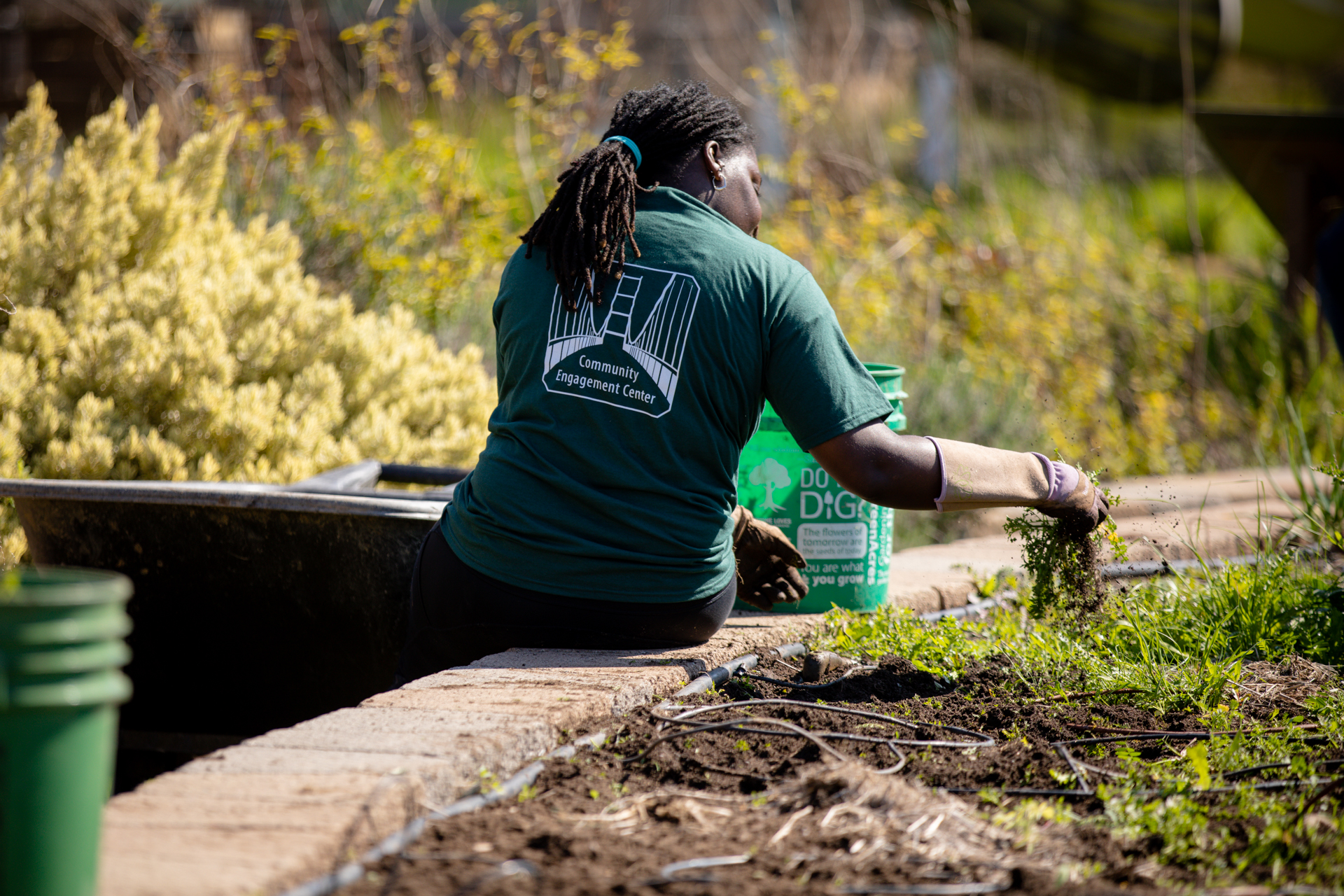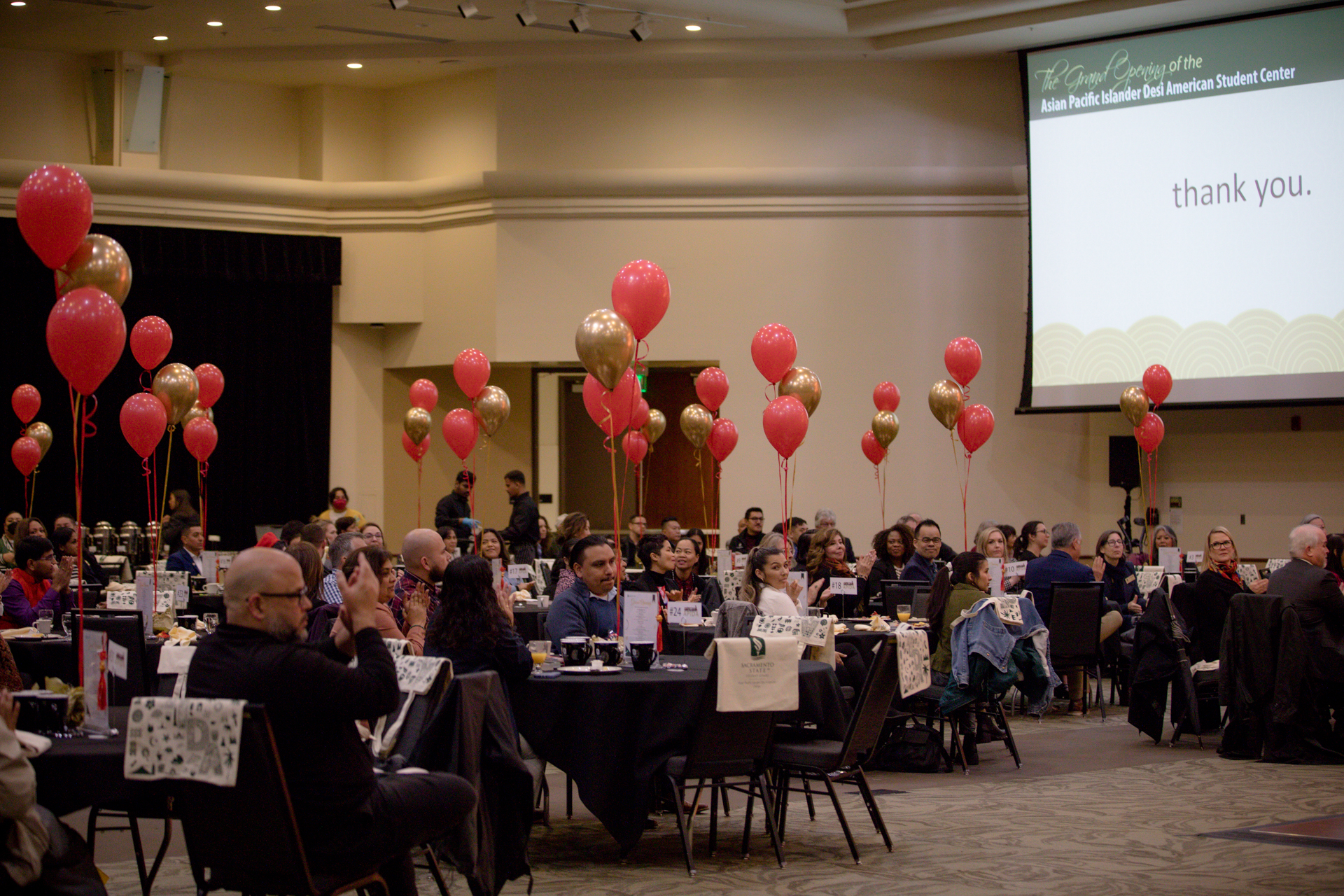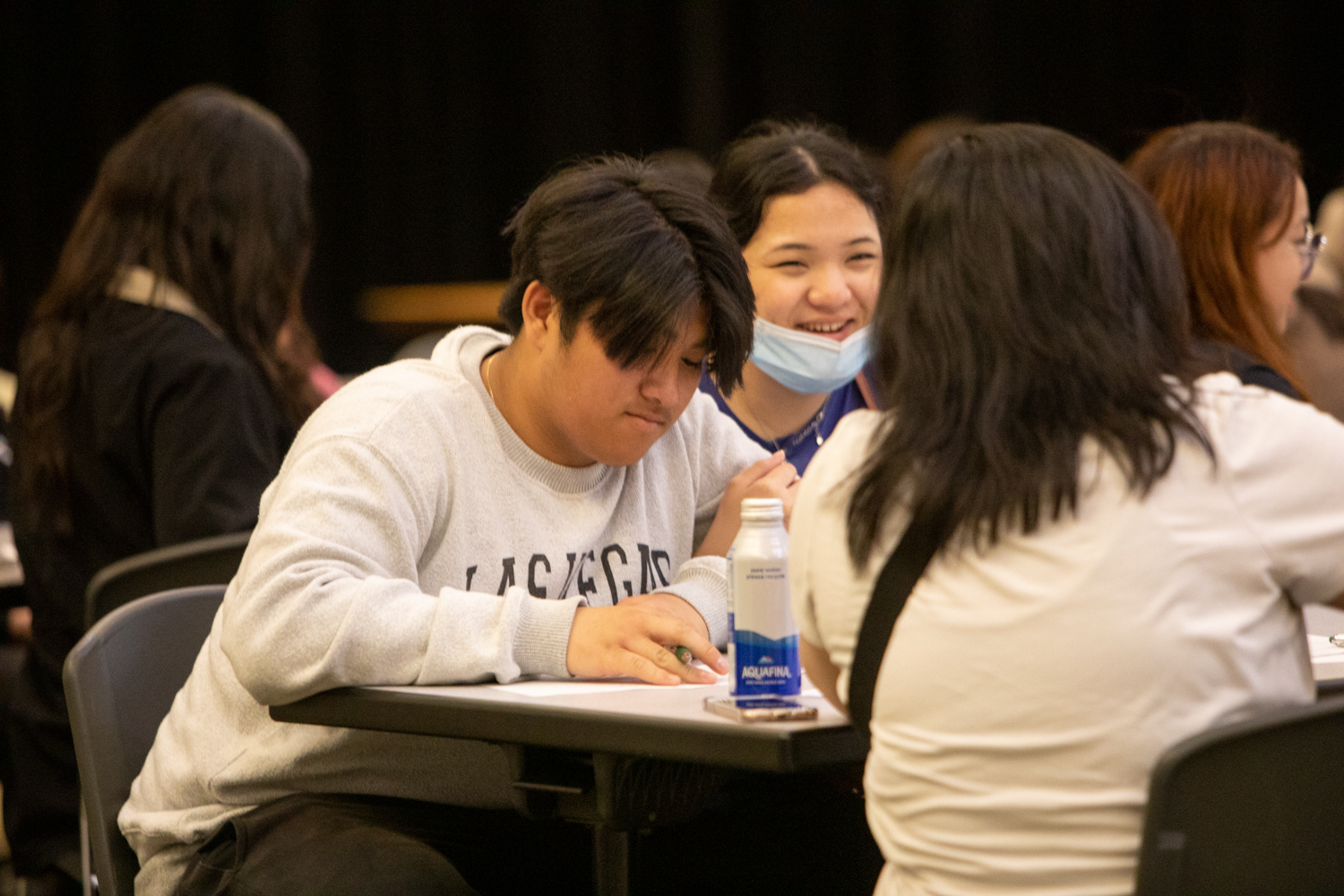Story Content
Hundreds attend Sac State symposium confronting antiracism, bias, and injustice
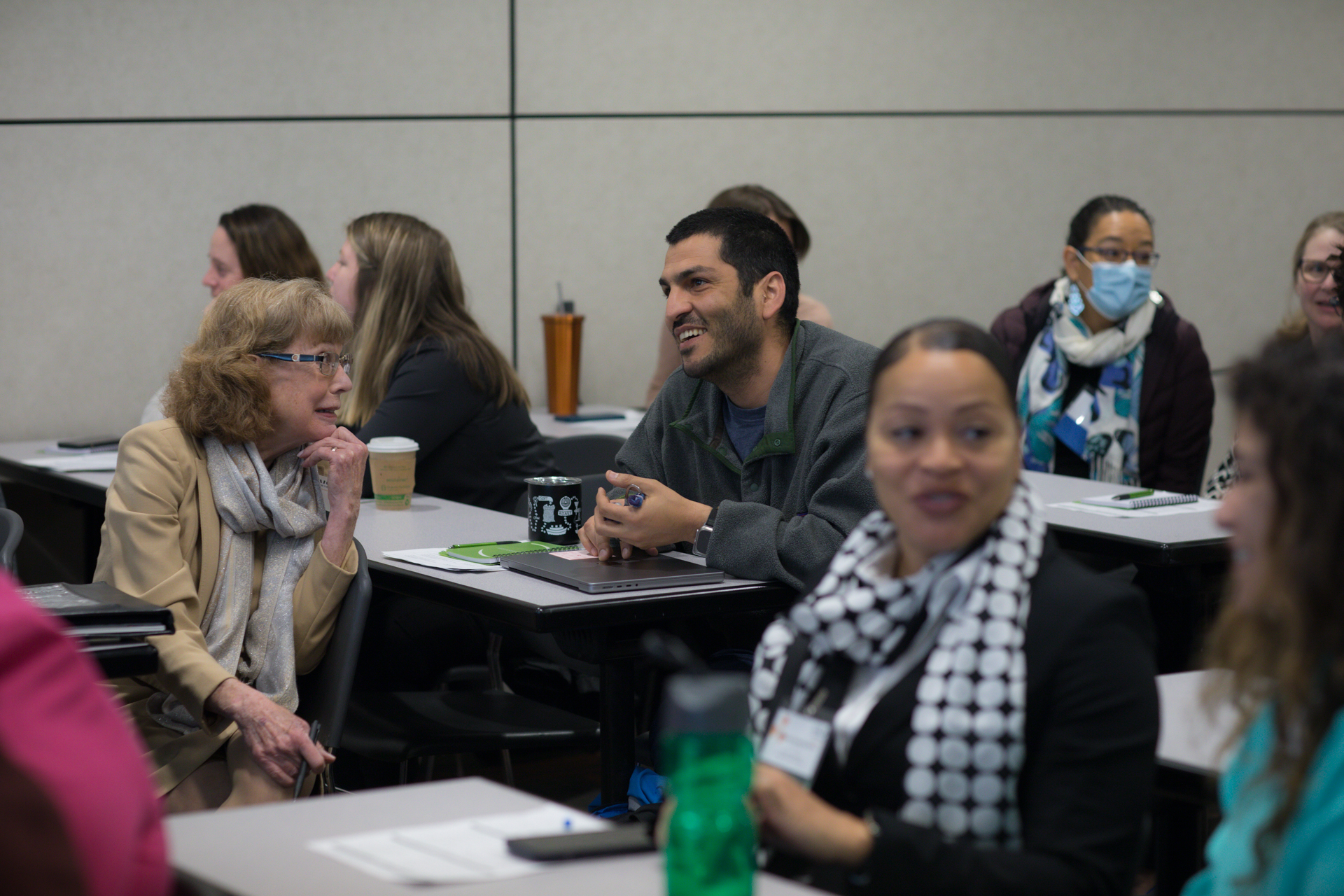
March 29, 2023
Sacramento State’s commitment to diversity and inclusion extends far beyond race, participants at a daylong conference heard on Tuesday.
Bias and exclusion touches people of all cultures, genders, ages, and abilities, speakers said at the University’s Antiracism and Inclusive Campus Plan (AICP) Spring Symposium inside the University Union.
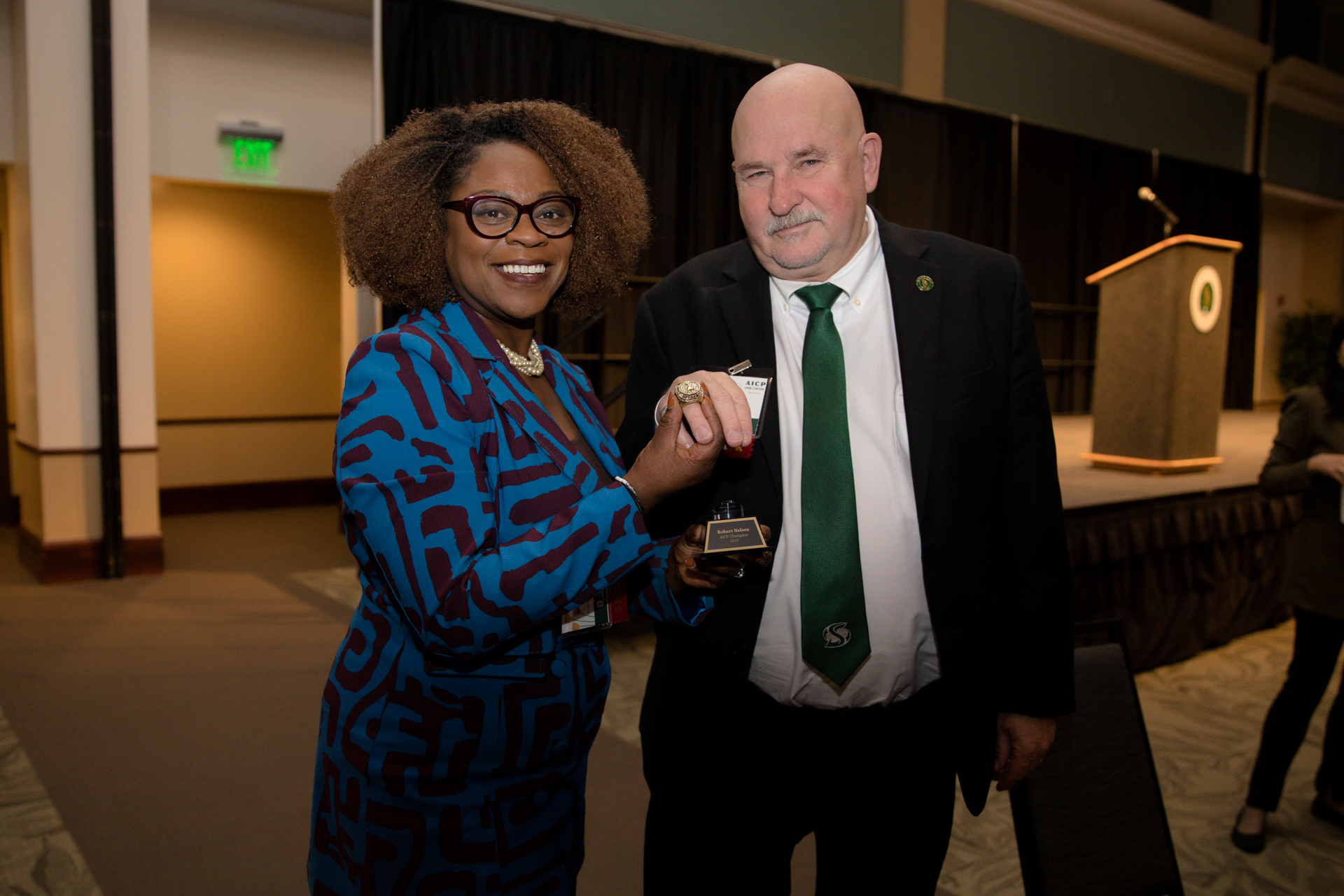
Hundreds of campus and community participants learned about sexual violence prevention, discrimination against people with disabilities, reparations for Black Americans harmed by racist practices, and inclusive hiring, among other topics.
The gathering reflected Sac State’s goal of becoming a campus that is accessible and welcoming to all as the University moves further into the second year of what is scheduled to be a five-year AICP implementation.
“We believe and acknowledge that we have some challenges” in achieving that goal, said Mia Settles-Tidwell, the University’s vice president for Inclusive Excellence. “But we believe and acknowledge that we can do something about those challenges.”
With the release of its comprehensive AICP in 2021, the University announced its intention to directly confront racism and inequity. The plan’s recommendations include analyzing curriculum development, retaining valued faculty and staff, and hosting meetings and conferences that address key topics around inclusion and justice.
Settles-Tidwell has promised accountability as the plan’s implementation advances. Sac State has implemented or is in the process of putting into place 95% of the project’s 28 goals, she said.
In the second year of the plan, “we are getting deeper into our work of ridding ourselves, our policies, and our practices” of bias, Settles-Tidwell said.
Workshops at Tuesday’s symposium covered nearly two dozen topics.
Leah C. Greer, an associate professor and program coordinator of American Sign Language and Deaf Studies, discussed audism, or the belief that people who can hear or speak are superior to those who cannot.
That bias, she said, limits educational and work opportunities for people with hearing disabilities. Throughout history, deaf people have experienced segregation from other students and a lack of accommodations that would allow them to fully participate in education and other activities, Greer said.
She said Sac State must confront “the way that audist practices may manifest here on campus, creating exclusivity.”
In the University’s sweeping antiracism plan, which spans more than 300 pages, “disability is mentioned only five times,” she said.
“If we do not continue to examine audist structures here on campus, it won’t be possible to fully realize the aims of the Antiracist and Inclusive Campus Plan.”
Another workshop focused on the true meaning of inclusion.
Kaifa Yates, program director for Sac State’s Martin Luther King Jr. Center, said inclusion is about more than checking ethnic boxes. It is about providing individuals with spaces, resources, and learning tools that will allow them to thrive, he said.
The MLK Center offers a community room, study areas, help with scholarships and jobs, and tools for dealing with stress and anxiety, among other resources designed to attract Black students and keep them on a path toward earning their degrees.
Jerry Blake, who leads retention efforts at the University’s Educational Opportunity Program, urged workshop participants to ask themselves “what you are going to do differently” to help knock down barriers that Black students face.
“What are you going to do to improve inclusivity?” he asked.
Settles-Tidwell issued a similar challenge as Sac State strives to change a culture that has caused many people to feel left out. She urged the symposium audience to actively reject bias and to respect, acknowledge, and get to know people with diverse backgrounds and experiences.
“I call upon you to engage authentically into the process of cultural transformation,” she said.
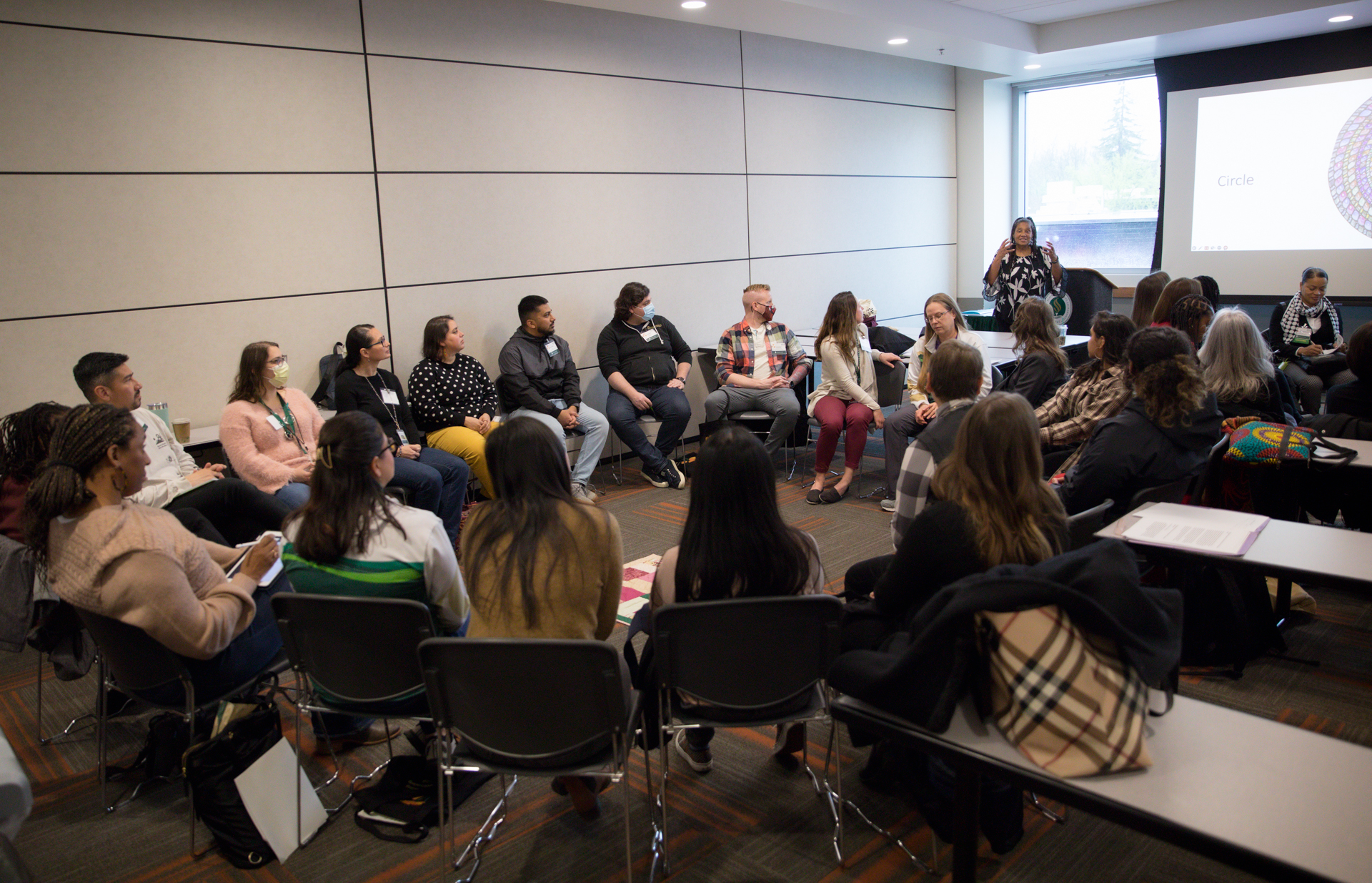
Attendees of Sac State's Antiracism and Inclusive Campus Plan Spring Symposium participated in more than two dozen workshops to learn about bias, antiracism, injustice and more. Pictured: "Circle Processes to Foster Belonging Conversations About Race," a workshop by Stacie Walton and Gretchen Jung of the Renaissance Society. (Sacramento State/Bibiana Ortiz)
Media Resources
Faculty/Staff Resources
Looking for a Faculty Expert?
Contact University Communications
(916) 217-8366
communications@csus.edu
